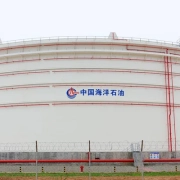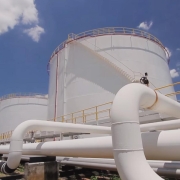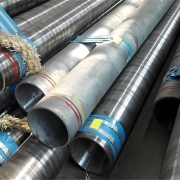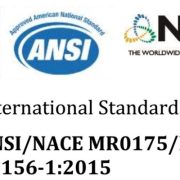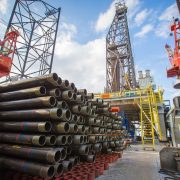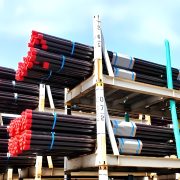Building Oil Storage Tanks: Plates Selection and Processes
Introduction
Building oil storage tanks is critical to the oil and gas industry. These tanks must be designed and built precisely to ensure safety, durability, and efficiency in storing oil products. One of the most critical components of these tanks is the selection and processing of plates used in their construction. This blog provides a detailed overview of the plate selection criteria, fabrication processes, and considerations for building oil storage tanks.
Importance of Plate Selection
Plates are the primary structural component of oil storage tanks. The selection of appropriate plates is crucial for several reasons:
Safety: The suitable plate material ensures the tank can withstand the stored product’s internal pressure, environmental conditions, and potential chemical reactions.
Durability: High-quality materials enhance the tank’s longevity, reducing maintenance costs and downtime.
Compliance: Adherence to industry standards and regulations is essential for legal operation and environmental protection.
Cost-efficiency: Choosing the correct materials and processing methods can significantly reduce construction and operational costs.
Types of Oil Storage Tanks
Before diving into plate selection, it’s essential to understand the different types of oil storage tanks, as each type has specific requirements:
Fixed-roof tanks are the most common type of storage tank used for oil and petroleum products. They are suitable for liquids with low vapor pressure.
Floating Roof Tanks: These tanks have a roof that floats on the surface of the stored liquid, reducing evaporation losses and the risk of explosion.
Bullet Tanks: These cylindrical tanks store liquefied gases and volatile liquids.
Spherical Tanks: Used for storing high-pressure liquids and gases, providing equal stress distribution.
Plate Selection Criteria
1. Material Composition
Carbon Steel: Widely used due to its strength, affordability, and availability. Suitable for most oil and petroleum products.
Stainless Steel: Preferred for storing corrosive or high-temperature products due to its corrosion resistance.
Aluminum: Lightweight and corrosion-resistant, ideal for floating roof components and tanks in corrosive environments.
Composite Materials: Occasionally used for specific applications requiring high corrosion resistance and lightweight.
2. Thickness and Size
Thickness: This is determined by the tank’s design pressure, diameter, and height. It generally ranges from 5 mm to 30 mm.
Size: Plates should be large enough to minimize welding seams but manageable for handling and transportation.
3. Mechanical Properties
Tensile Strength: Ensures the tank can withstand internal pressure and external forces.
Ductility: Allows for deformation without fracturing, accommodating changes in pressure and temperature.
Impact Resistance: Important for withstanding sudden forces, especially in colder environments.
4. Environmental Factors
Temperature Variations: Consideration of material behavior in extreme temperatures.
Corrosive Environment: Selection of materials resistant to environmental corrosion, especially for offshore or coastal installations.
Material Standards and Grades
Adhering to recognized standards and grades is crucial when selecting materials for oil storage tanks, as this ensures quality, performance, and compliance with industry regulations.
Carbon Steel
Standards: ASTM A36, ASTM A283, JIS G3101
Grades:
ASTM A36: Common structural steel grade used for tank construction due to its good weldability and machinability.
ASTM A283 Grade C: Offers good strength and flexibility for moderate stress applications.
JIS G3101 SS400: A Japanese standard for carbon steel used for general structural purposes, known for its good mechanical properties and weldability.
Stainless Steel
Standards: ASTM A240
Grades:
304/304L: Offers good corrosion resistance and is used for storing mildly corrosive products in tanks.
Due to added molybdenum, 316/316L Provides superior corrosion resistance, especially in marine environments.
904L (UNS N08904): Known for its high corrosion resistance, particularly against chlorides and sulfuric acid.
Duplex Stainless Steel 2205 (UNS S32205): Combines high strength with excellent corrosion resistance, suitable for harsh environments.
Aluminum
Standards: ASTM B209
Grades:
5083: Known for its high strength and excellent corrosion resistance, it is ideal for tanks in marine environments.
6061: Offers good mechanical properties and weldability, suitable for structural components.
Composite Materials
Standards: ASME RTP-1
Applications: Used in specialized applications requiring resistance to chemical attack and weight savings.
Types of Linings and Coatings
Linings and coatings protect oil storage tanks from corrosion and environmental damage. The choice of lining and coating depends on the tank’s location, contents, and ecological conditions.
External Coatings
Epoxy Coatings:
Properties: Offer excellent adhesion and corrosion resistance. Suitable for harsh environments.
Applications: Used on tank exteriors to protect against weathering and chemical exposure.
Recommended Brands:
Hempel: Hempel’s Epoxy 35540
AkzoNobel: Interseal 670HS
Jotun: Jotamastic 90
3M: Scotchkote Epoxy Coating 162PWX
Recommended DFT (Dry Film Thickness): 200-300 microns
Polyurethane Coatings:
Properties: Provide excellent UV resistance and flexibility.
Applications: Ideal for tanks exposed to sunlight and varying weather conditions.
Recommended Brands:
Hempel: Hempel’s Polyurethane Enamel 55300
AkzoNobel: Interthane 990
Jotun: Hardtop XP
Recommended DFT: 50-100 microns
Zinc-Rich Primers:
Properties: Provide cathodic protection to steel surfaces.
Applications: Used as a base coat to prevent rusting.
Recommended Brands:
Hempel: Hempadur Zinc 17360
AkzoNobel: Interzinc 52
Jotun: Barrier 77
Recommended DFT: 120-150 microns
Internal Linings
Phenolic Epoxy Linings:
Properties: Excellent chemical resistance to petroleum products and solvents.
Applications: Used inside tanks storing crude oil and refined products.
Recommended Brands:
Hempel: Hempel’s Phenolic 35610
AkzoNobel: Interline 984
Jotun: Tankguard Storage
Recommended DFT: 400-600 microns
Glass Flake Coatings:
Properties: High chemical and abrasion resistance.
Applications: Suitable for aggressive chemical storage and tank bottoms.
Recommended Brands:
Hempel: Hempel’s Glassflake 35620
AkzoNobel: Interzone 954
Jotun: Baltoflake
Recommended DFT: 500-800 microns
Rubber Linings:
Properties: Provide flexibility and resistance to chemicals.
Applications: Used for storage of corrosive substances like acids.
Recommended Brands:
3M: Scotchkote Poly-Tech 665
Recommended DFT: 2-5 mm
Selection Considerations
Product Compatibility: Ensure the lining or coating is compatible with the stored product to prevent reactions.
Environmental Conditions: Consider temperature, humidity, and chemical exposure when selecting linings and coatings.
Maintenance and Durability: Choose linings and coatings that offer long-term protection and are easy to maintain.
Fabrication Processes
The fabrication of oil storage tanks involves several key processes:
1. Cutting
Mechanical Cutting: Involves shearing, sawing, and milling to shape the plates.
Thermal Cutting: Utilizes oxy-fuel, plasma, or laser cutting for precise and efficient shaping.
2. Welding
Welding is critical for joining plates and ensuring structural integrity.
Shielded Metal Arc Welding (SMAW): Commonly used for its simplicity and versatility.
Gas Tungsten Arc Welding (GTAW): Provides high-quality welds for critical joints.
Submerged Arc Welding (SAW): Suitable for thick plates and long seams, offering deep penetration and high deposition rates.
3. Forming
Rolling: Plates are rolled into the desired curvature for cylindrical tank walls.
Press Forming: Used for shaping tank ends and other complex components.
4. Inspection and Testing
Non-Destructive Testing (NDT): Techniques such as ultrasonic testing and radiography ensure weld quality and structural integrity without damaging the material.
Pressure Testing: Ensures the tank can withstand the design pressure without leaking.
5. Surface Preparation and Coating
Blasting: Cleans and prepares the surface for coating.
Coating: Application of protective coatings to prevent corrosion and extend the tank’s lifespan.
Industry Standards and Regulations
Adherence to industry standards ensures safety, quality, and compliance. Key standards include:
API 650: Standard for welded steel storage tanks for oil and gas.
API 620: Covers the design and construction of large, low-pressure storage tanks.
ASME Section VIII: Provides guidelines for pressure vessel construction.
Conclusion
The construction of oil storage tanks requires meticulous attention to detail, particularly in the selection and processing of plates. By considering factors such as material composition, thickness, mechanical properties, and environmental conditions, builders can ensure these critical structures’ safety, durability, and cost-effectiveness. Adherence to industry standards and regulations further ensures compliance and protection of the environment. As the oil and gas industry continues to evolve, advancements in materials and fabrication technologies will continue to enhance the construction of oil storage tanks.

